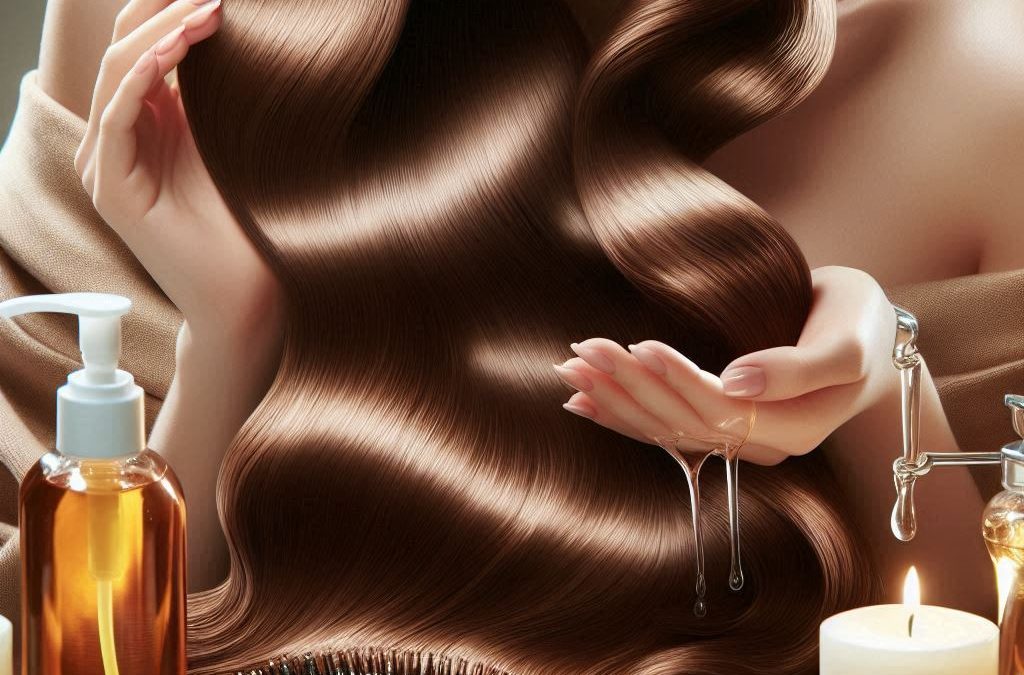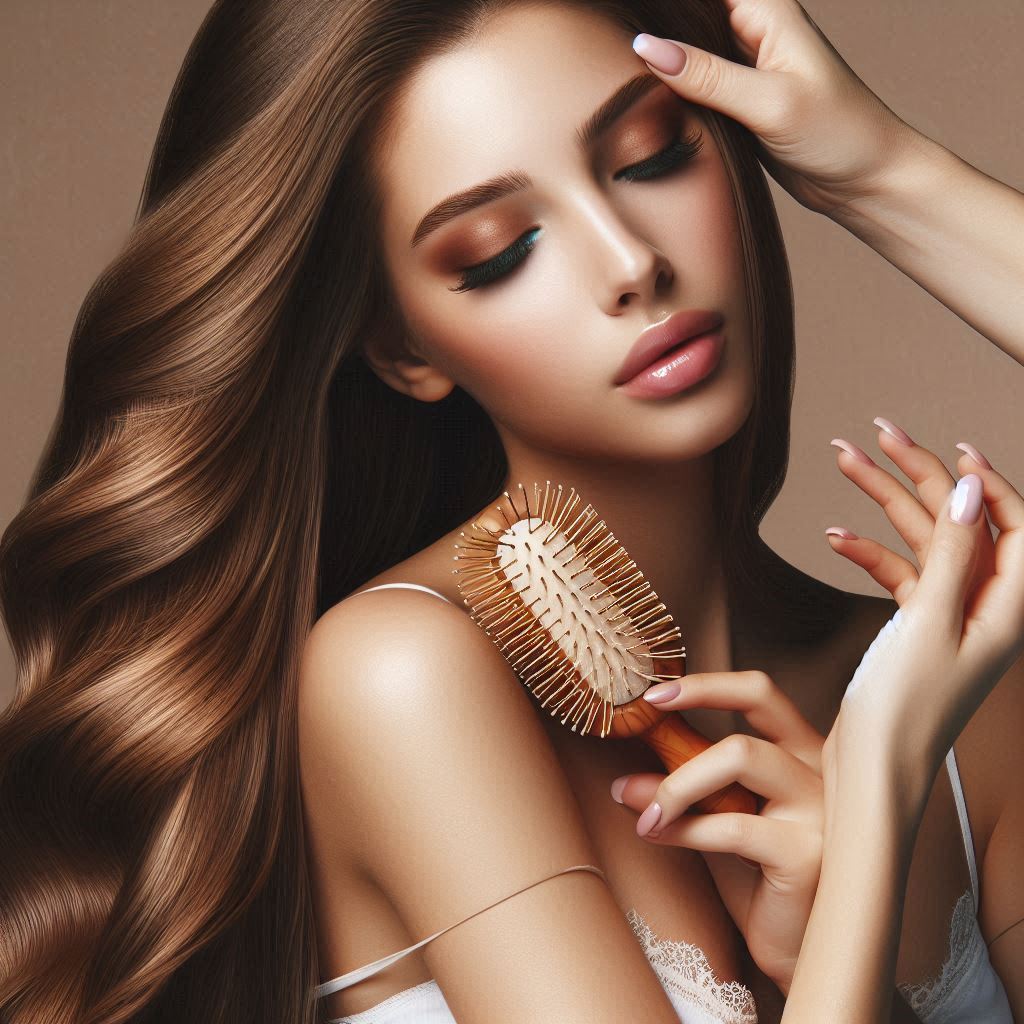Introduction
In today’s world, maintaining healthy and shiny hair is an essential part of personal grooming and self-confidence. Hair is often considered a reflection of our overall health, and its condition can significantly impact how we feel about ourselves. From its structure to the products we use, understanding the fundamentals of hair care is crucial for achieving the luscious locks we desire.
Hair is composed of keratin, a protein that forms the structure of each strand. It consists of three layers: the cuticle (outer layer), cortex (middle layer), and medulla (innermost layer). The cuticle acts as a protective barrier, while the cortex provides strength and color. Understanding this structure helps us appreciate why proper care is vital.
Healthy hair is not only about aesthetics but also about maintaining the integrity of the hair and scalp. This article delves into various aspects of hair care, offering insights into how to achieve and maintain beautiful, healthy hair.
Types and Categories of Hair
Different Hair Types: Straight, Wavy, Curly, Coily
Hair type is primarily determined by the shape of the hair follicle. Straight hair tends to be more resilient and less prone to damage, while curly and coily hair types require more moisture and careful handling.
Hair Texture: Fine, Medium, Thick
Hair texture refers to the diameter of the hair strand. Fine hair is delicate and can be easily weighed down by heavy products, while thick hair may require more intensive conditioning to maintain moisture.
Hair Porosity: Low, Medium, High
Porosity determines how well hair absorbs and retains moisture. Low-porosity hair is often resistant to moisture, while high-porosity hair absorbs moisture quickly but can lose it just as fast.
Scalp Types: Oily, Dry, Combination
Understanding your scalp type is crucial for selecting appropriate hair care products. An oily scalp may benefit from clarifying shampoos, while a dry scalp requires nourishing, hydrating products.
Symptoms and Signs of Unhealthy Hair
Common Signs of Hair Damage
Hair damage can manifest as split ends, frizz, and breakage. These issues are often the result of heat styling, chemical treatments, and environmental factors.
Indicators of Scalp Issues
A healthy scalp is essential for healthy hair growth. Itchiness, redness, and flaking can indicate scalp issues that need addressing.
Early Warning Signs of Hair Loss
Hair loss can be distressing and may result from genetic factors, hormonal changes, or medical conditions. Recognizing early signs like thinning and excessive shedding is important for timely intervention.
Identifying Dandruff and Flaking
Dandruff is a common scalp condition characterized by flaking and itching. It can be caused by dry skin, fungal infections, or sensitivity to hair products.
Causes and Risk Factors
Biological Factors: Genetics, Hormones
Genetics play a significant role in determining hair type, texture, and propensity for conditions like hair loss. Hormonal changes, such as those during pregnancy or menopause, can also affect hair health.
Environmental Factors: Pollution, UV Exposure
Environmental pollutants and UV rays can cause oxidative stress on hair, leading to damage and dullness. Protective measures, such as wearing hats and using UV-protective products, are beneficial.
Lifestyle Factors: Diet, Stress, Hair Styling Practices
A balanced diet rich in vitamins and minerals supports healthy hair growth. Stress management and avoiding excessive heat styling and chemical treatments are crucial for maintaining hair integrity.
Product-Related Issues: Chemicals, Allergens
Some hair care products contain harsh chemicals that can strip hair of its natural oils, leading to dryness and damage. Allergic reactions to certain ingredients can also cause scalp irritation and hair issues.
Diagnosis and Tests
Professional Hair and Scalp Analysis
A professional analysis by a dermatologist or trichologist can provide insights into hair health, identifying underlying issues and recommending appropriate treatments.
At-Home Hair Health Tests
Simple at-home tests, such as the strand test for porosity, can help individuals understand their hair’s needs and tailor their care routine accordingly.
Tools and Technology Used in Diagnosis
Advanced tools like dermoscopy and scalp imaging are used by professionals to assess scalp health and diagnose conditions like alopecia and psoriasis.
Treatment Options
Medical Treatments: Minoxidil, Finasteride
Minoxidil and finasteride are FDA-approved treatments for hair loss. They work by stimulating hair growth and slowing down the process of hair thinning.
Over-the-counter products: Shampoos, Conditioners, Serums
The market offers a plethora of products designed to address various hair concerns. Shampoos and conditioners formulated with specific ingredients, such as biotin and keratin, can improve hair health.
Natural Remedies: Oils, Masks, Herbal Treatments
Natural oils like coconut and argan oil are renowned for their nourishing properties. Homemade hair masks and herbal treatments can provide deep conditioning and repair.
Salon Treatments: Keratin, Hair Botox, Scalp Treatments
Salon treatments like keratin and hair botox offer long-lasting solutions for frizz and damage. Scalp treatments, such as exfoliation and detox, promote a healthy environment for hair growth.
Preventive Measures
Daily Hair Care Routine
A consistent hair care routine, including gentle cleansing, conditioning, and regular trims, is vital for maintaining hair health.
Seasonal Hair Care Tips
Adapting hair care practices to seasonal changes helps protect hair from the effects of humidity, dryness, and temperature fluctuations.
Protective Hairstyles and Accessories
Protective hairstyles, such as braids and buns, minimize hair exposure to environmental stressors. Accessories like silk pillowcases and hair wraps reduce friction and breakage.
Avoiding Common Hair Care Mistakes
Avoiding excessive heat styling, tight hairstyles, and overuse of products prevents damage and supports healthy hair growth.
Personal Stories or Case Studies
Success Stories of Hair Restoration
Stories of individuals who have successfully restored their hair through treatments and lifestyle changes provide inspiration and hope.
Personal Journeys of Overcoming Hair Loss
Personal accounts of coping with hair loss and finding effective solutions highlight the emotional and psychological aspects of hair health.
Real-Life Experiences with Hair Care Products
Testimonials from users who have experienced positive results with specific hair care products offer valuable insights for others seeking solutions.
Expert Insights
Advice from Dermatologists and Trichologists
Dermatologists and trichologists provide evidence-based advice on managing hair and scalp conditions, emphasizing the importance of professional consultation.
Tips from Professional Hairstylists
Hairstylists share practical tips for achieving and maintaining healthy hair, including styling techniques and product recommendations.
Expert Opinions on Trending Hair Care Products
Experts evaluate the efficacy and safety of trending hair care products, helping consumers make informed choices.
Conclusion
Maintaining healthy, shiny hair is an achievable goal with the right knowledge and practice. By understanding the unique needs of your hair type and addressing underlying issues, you can enjoy the benefits of beautiful, resilient hair. Adopting a holistic approach to hair care, including a balanced diet, stress management, and the use of suitable products, is key to long-term hair health.
For those seeking further education and personalized advice, consulting with professionals in the field is highly recommended. Embrace the journey to healthy hair and experience the confidence that comes with it.


